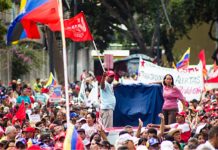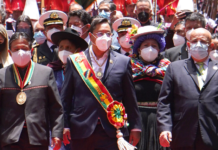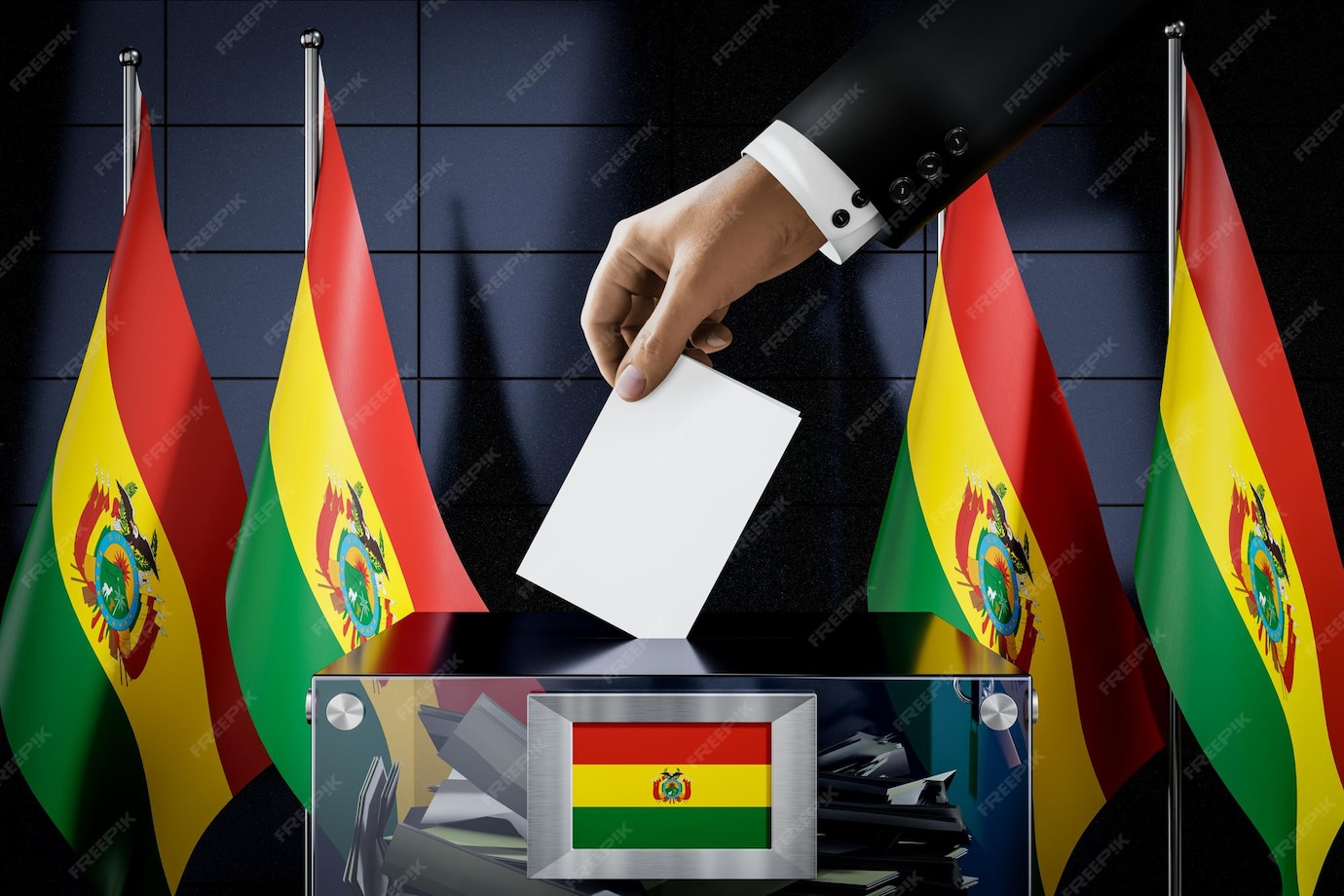
On October 19, Bolivia will have a new president—and he will be from the right. It is confirmed that the country is about to make a sharp ideological turn since the Movement for Socialism (MAS) came to power in January 2006.
Broadly speaking, Bolivia has had nearly 20 years of leftist governments, although the current administration of Luis Arce has clearly deviated from its original mandate—particularly in its political persecution of popular leaders, including former President Evo Morales.
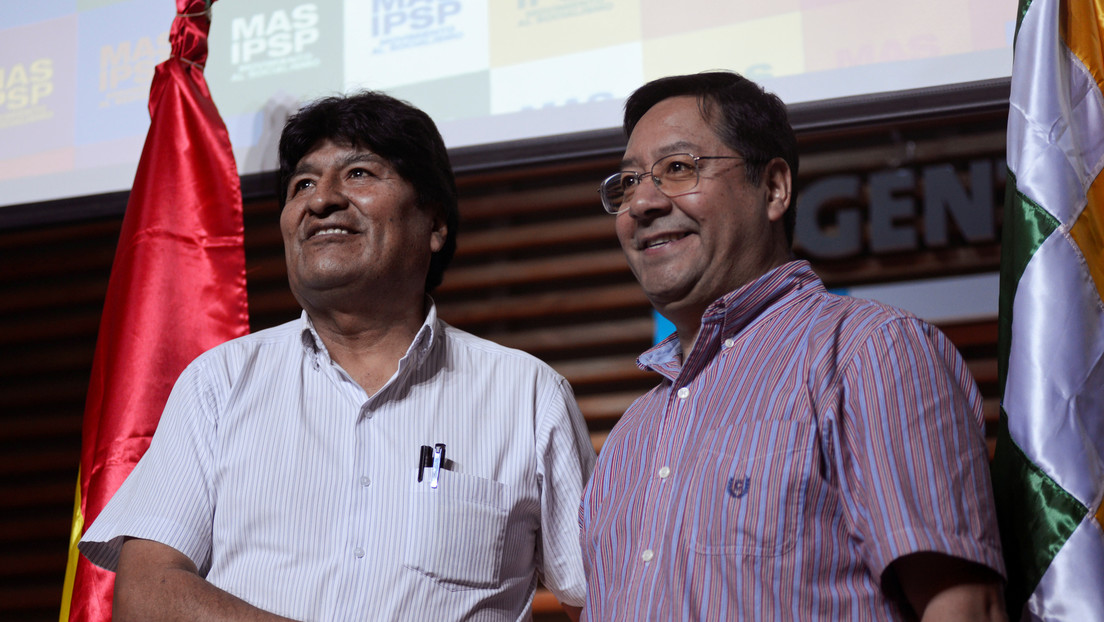
The question now is whether this shift will be a full 180-degree turn or a more moderate change—it will likely be the latter. But the outcome is no longer in doubt: Bolivia is turning right. The two candidates who made it to the runoff are both right-wing: Rodrigo Paz Pereira, the frontrunner, and his rival, Jorge “Tuto” Quiroga. The third-place candidate, Samuel Doria Medina, who earned 19% of the vote, has already endorsed Paz.
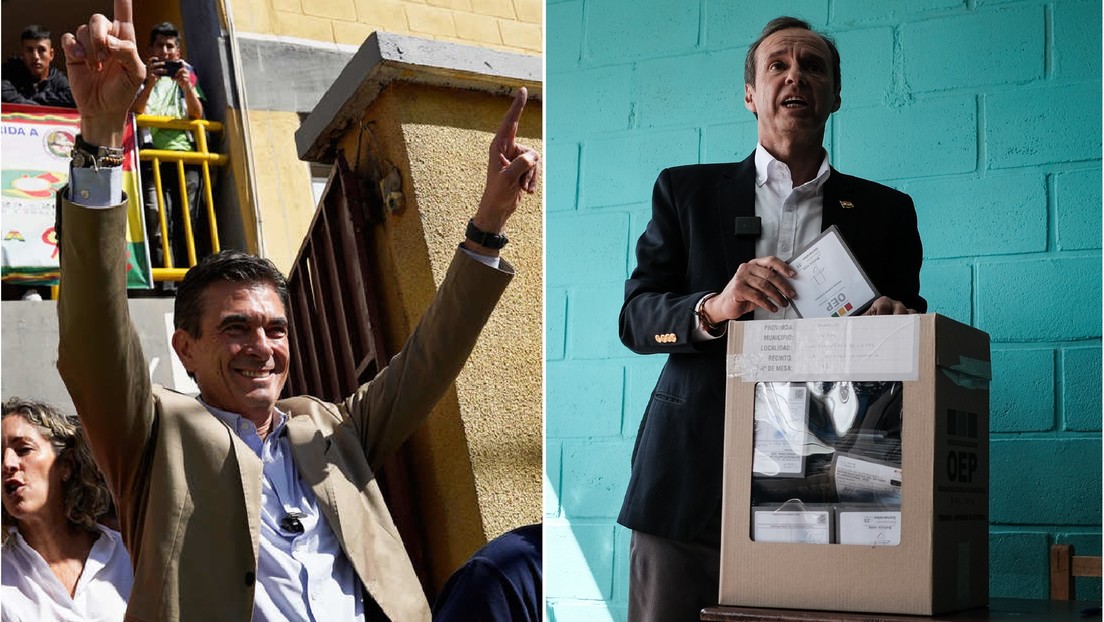
With mandatory voting, turnout reached 88%, similar to previous elections. Valid votes accounted for 78%, and blank votes 2.4%. A striking figure: null votes reached 19.2%, quadrupling the rate from 2020, largely driven by a call from Evo Morales, effectively making this bloc the third political force in the country.
Of the eight male candidates, five were from neo-liberal, pro-privatization backgrounds, two came from splinter factions of MAS, and one positioned himself as a centrist populist. As a result, the Legislative Assembly—both deputies and senators—will now have a sweeping conservative and neo-liberal majority.
Bolivia’s “Paz”
Rodrigo Paz Pereira, 57, from the Christian Democratic Party (PDC), won the first round with 32.1% of the vote (about 21% of the electoral roll). He was the surprise of the election and is poised to become Bolivia’s next president.
Born in Spain while his parents were in exile during Bolivia’s military dictatorships, he is the son of former president Jaime Paz Zamora—a social democrat who ultimately led a neo-liberal, privatization-driven government. Rodrigo is a former deputy and ex-mayor; a professional economist, he holds a master’s degree in political management from American University in Washington, D.C.
He currently serves as a senator with the opposition party Comunidad Ciudadana (CC), led by Carlos Mesa (2003-2005), another right-wing former president.
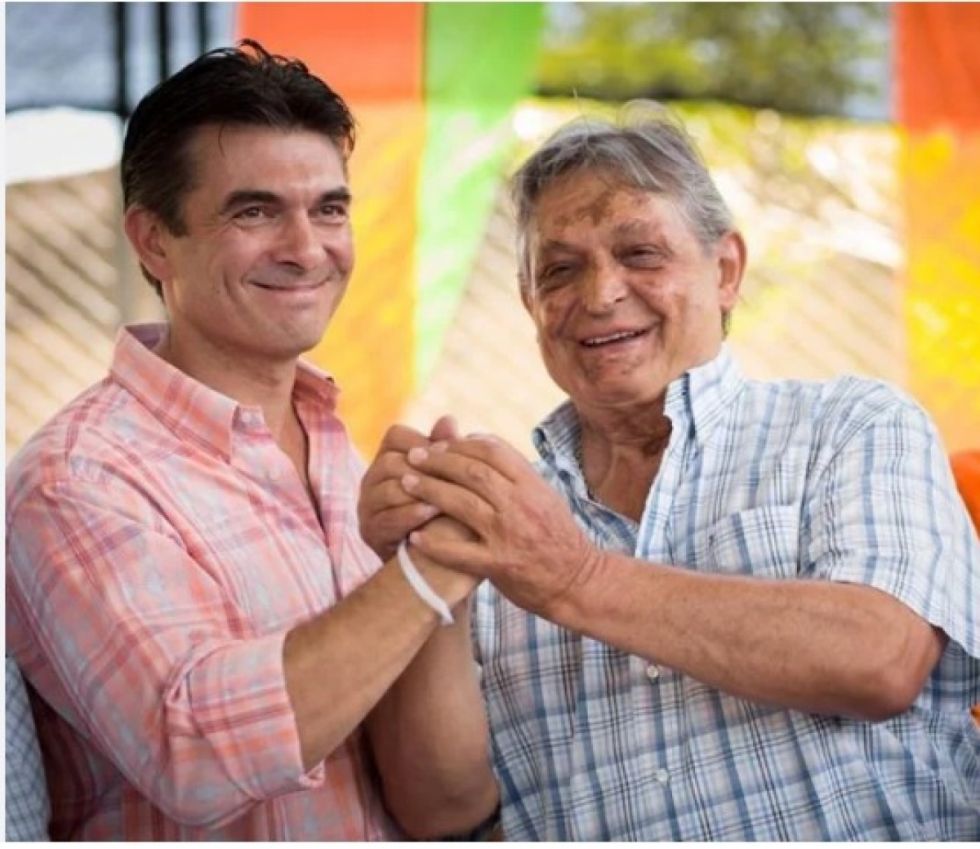
Paz built his political career in Tarija, Bolivia’s main gas-producing region—often referred to as the country’s “wallet.” This may explain his calls for autonomy and a decentralized state that allocates greater budgets to regional departments. This, of course, would benefit wealthier regions and hurt the more marginalized ones.
The PDC’s government plan, titled “Agenda 50/50,” is based on three pillars. The first claims the state “suffocates” the economy by controlling nearly 85% of the national budget. The proposal is to redistribute that budget equally between the central government and regional entities, including public universities.
Paz also promotes what he calls “Capitalism for All” or “Money for Everyone”: It is a program of accessible credit, tax breaks to boost the formal economy, and the elimination of import barriers for products not made in Bolivia—including scrapping customs altogether. “Better times are coming: lower tariffs, lower taxes, lots of credit, money for everyone,” he declared during his victory speech. However, it is doubtful that any government can benefit everyone without harming someone; someone will inevitably pay the cost.
His third major pillar is a judicial reform and a fight against corruption, which he describes as a structural problem in Bolivia.
Paz’s running mate, former police captain Edmand Lara, played a crucial role in their victory by attracting significant voter support. Lara rose to fame on social media by exposing alleged corruption cases within the police, until he was discharged in 2024.
Antonio Abal, former Bolivian consul in Argentina, journalist, and leftist activist, describes him: “It was common to see him online, complaining first about his economic situation, about the torture he had suffered during his detention, and about mistreatment in general. He eventually ran out of resources and resorted to various odd jobs, like selling clothes at street stalls. He shared all this as a personal struggle, which attracted many followers who sympathized with him. There’s no doubt that Captain Lara was the one who pulled in most of the votes that put Rodrigo Paz where he is today.”
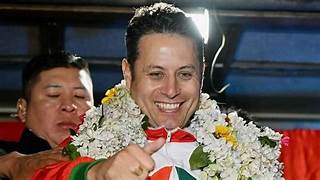
Paradoxically, the media now label Rodrigo Paz as a “social democrat” or even “center-left.” “I believe he is the most suitable figure for the United States. It is striking that he won, for instance, in rural areas such as La Paz or Oruro. He is seen as the lesser evil,” explains Antonio Abal. His platform is entirely neoliberal: privatizations, “downsizing the State,” handing over natural resources, and the aforementioned departmental economic decentralization. “It is the proposal of Bolivia’s agribusiness power bloc, which wants to hold the upper hand on land issues. The industry has long had an agenda of expanding its agricultural frontier into large areas of the Bolivian Amazon and introducing genetically modified crops, presented under the label of biotechnology.”
Conservative Jorge “Tuto” Quiroga, former president of Bolivia and candidate of the Liberty and Democracy alliance, finished second (26.8%) and will face Paz in the runoff. “I am a man of freedom, of free trade,” he stated. Quiroga advocates cutting “with chainsaws, machetes, scissors, whatever it takes” to reduce government spending.
Born in Cochabamba in 1960, Quiroga studied industrial engineering at the University of Texas and earned an MBA. In 1988 he joined Nationalist Democratic Action (ADN), the party founded by dictator Hugo Banzer Suárez—the only Latin American dictator who managed to return to the presidency through democratic elections in 1997.
If “Tuto” Quiroga were to win, the “change will be radical,” in his own words: fiscal discipline, digitalization of the state, and greater openness to international trade. As an expression of Bolivia’s most extreme racist elite, a Quiroga presidency would likely mean increased persecution of social and Indigenous movements, and Evo Morales would struggle to avoid imprisonment.
The Right in Bolivia
This turn to the right is so sharp that hard-won rights from the MAS era are now at risk. Internal divisions, inflated egos, and personalism among leftist leaders bear much of the blame.
Political analyst Jorge Richter warns: “The challenge in these elections is to build a national project that includes all the different peoples of the Bolivian state. Societies must first organize around equality before they can discuss economic models. The right has no national project.”
Antonio Abal agrees: “The biggest danger in Bolivia now is a push to revise the Constitution, potentially dismantling the Plurinational State. There will be resistance. Any plan to exclude the Indigenous majority will not be easily implemented. There will be leaders from the Tropics of Cochabamba, and we’ll see whether the blank vote gains traction in the runoff.”
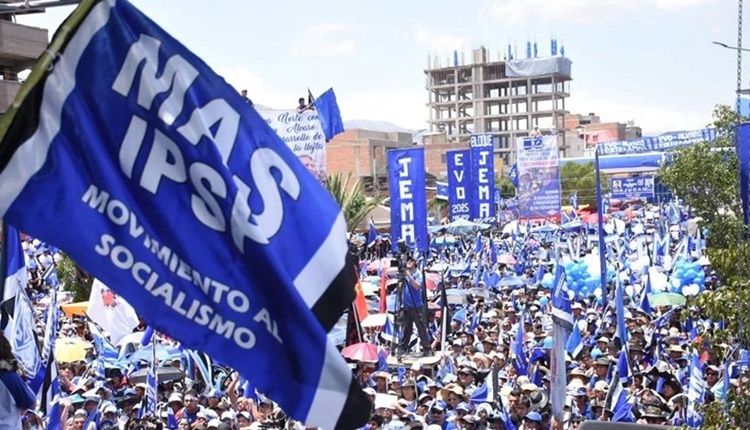
Silvina Romano, director of the Observatory on Legal Warfare, adds:
“This sector will likely demand representation. Unfortunately, Bolivia has a history of violent repression. What’s coming is far from reassuring. This appearance of democracy comes at a high price—as we saw in Ecuador, it risks hollowing out democracy altogether.”
With its geostrategic location and the world’s largest lithium reserves, along with rich gas and mineral resources, Bolivia remains highly coveted by foreign powers.
When MAS Is Less
Luis Arce received the highest vote count in Bolivian presidential history: 3.4 million votes, winning in November 2020 with 55.1%—surpassing even Evo’s 53.7% in 2005. At the time, MAS was united, and Evo Morales stood by Arce. Now, five years later, the reality has flipped.
Arce did not run for re-election due to his unpopularity. His chosen successor, Interior Minister Eduardo del Castillo, received just 3.2%; Evo’s former protégé, Andrónico Rodríguez, got 8.5%. Evo’s call for null votes garnered 19%. The sum of the parts (30%) is less than the former whole. MAS is less.
Yet Evo Morales “celebrated” the results: “We deeply respect and admire our political movement’s militants who, in less than two weeks of campaigning for null votes, achieved a historic result. Our protest was heard: We voted but did not choose, and the people made it clear that democracy cannot be reduced to an administrative formality.”
In that sense, researcher Silvina Romano states: “These elections are illegitimate because the Indigenous peasant population could not be represented—especially through their top leader, Evo Morales, who has been banned from running. It is a clear case of lawfare, very similar to what has happened in other Latin American countries. The fact that two right-wing candidates reached the runoff is the result of the left’s division. A very complex scenario lies ahead, especially with the 19% null vote bloc, which considers this election illegitimate.”
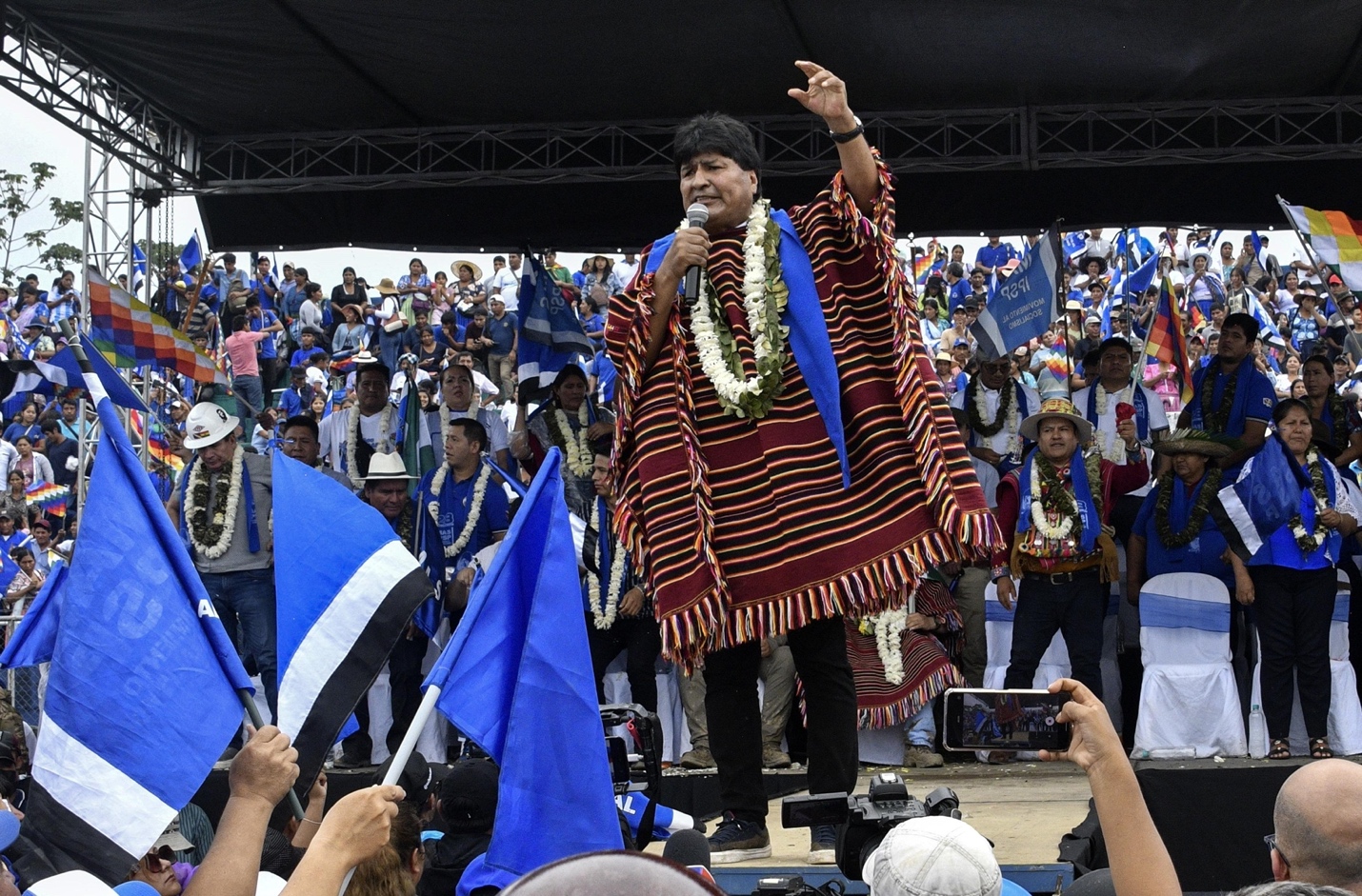
The economic crisis could no longer be hidden: The exchange rate rose from 6.96 to 15 Bolivian pesos, food prices soared, and there were fuel shortages. Although Evo Morales believes that “the people do not want privatizations,” the election results suggest otherwise.
Bolivia will now have a liberal, racist and elitist government—a type of leadership once thought gone for good. But given the country’s strong cultural heritage, Indigenous resistance will descend from the Altiplano. Bolivia is likely to have Paz as its next president. Yet, paradoxically, despite his name, the country is not headed for peaceful times.

CovertAction Magazine is made possible by subscriptions, orders and donations from readers like you.
Blow the Whistle on U.S. Imperialism
Click the whistle and donate
When you donate to CovertAction Magazine, you are supporting investigative journalism. Your contributions go directly to supporting the development, production, editing, and dissemination of the Magazine.
CovertAction Magazine does not receive corporate or government sponsorship. Yet, we hold a steadfast commitment to providing compensation for writers, editorial and technical support. Your support helps facilitate this compensation as well as increase the caliber of this work.
Please make a donation by clicking on the donate logo above and enter the amount and your credit or debit card information.
CovertAction Institute, Inc. (CAI) is a 501(c)(3) non-profit organization and your gift is tax-deductible for federal income purposes. CAI’s tax-exempt ID number is 87-2461683.
We sincerely thank you for your support.
Disclaimer: The contents of this article are the sole responsibility of the author(s). CovertAction Institute, Inc. (CAI), including its Board of Directors (BD), Editorial Board (EB), Advisory Board (AB), staff, volunteers and its projects (including CovertAction Magazine) are not responsible for any inaccurate or incorrect statement in this article. This article also does not necessarily represent the views the BD, the EB, the AB, staff, volunteers, or any members of its projects.
Differing viewpoints: CAM publishes articles with differing viewpoints in an effort to nurture vibrant debate and thoughtful critical analysis. Feel free to comment on the articles in the comment section and/or send your letters to the Editors, which we will publish in the Letters column.
Copyrighted Material: This web site may contain copyrighted material the use of which has not always been specifically authorized by the copyright owner. As a not-for-profit charitable organization incorporated in the State of New York, we are making such material available in an effort to advance the understanding of humanity’s problems and hopefully to help find solutions for those problems. We believe this constitutes a ‘fair use’ of any such copyrighted material as provided for in section 107 of the US Copyright Law. You can read more about ‘fair use’ and US Copyright Law at the Legal Information Institute of Cornell Law School.
Republishing: CovertAction Magazine (CAM) grants permission to cross-post CAM articles on not-for-profit community internet sites as long as the source is acknowledged together with a hyperlink to the original CovertAction Magazine article. Also, kindly let us know at info@CovertActionMagazine.com. For publication of CAM articles in print or other forms including commercial internet sites, contact: info@CovertActionMagazine.com.
By using this site, you agree to these terms above.
About the Author
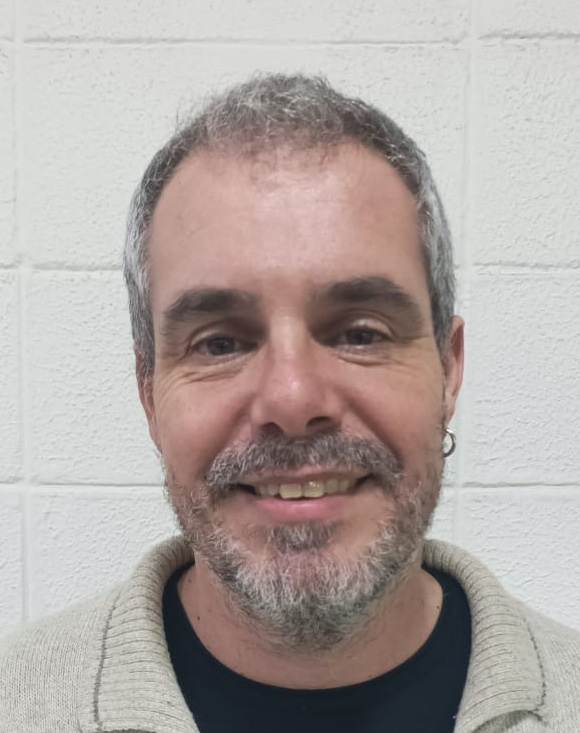
Hernán Viudes is an independent journalist and a graduate from The Faculty of Social Sciences at the University of Buenos Aires. He lives in Argentina and enjoys music, culture and football.
Hernán can be reached at hernanviudes@gmail.com.


